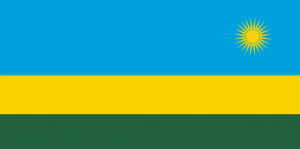Language/Kinyarwanda/Grammar/Conditional-Mood
Hi Kinyarwanda learners! 😊
In today's lesson, we will be discussing the conditional mood in Kinyarwanda. This is an important part of the language and understanding it will help you to communicate more effectively.
Don't miss the chance to check out these pages as you wrap up this lesson: How to Use Be, Negation & Plurals.
Overview[edit | edit source]
The conditional mood is used to express a hypothetical situation or a future event that is dependent on another condition. It is also used to express wishes, requests, and polite commands. In Kinyarwanda, the conditional mood is formed by adding the suffix -e to the verb stem.
Examples[edit | edit source]
- Niwe ukunda, ndabizi. (If you win, I will be happy.)
- Ndabiziye ukunda. (I wish you would win.)
- Urugero rwose, ndabiziye. (Please do it this way, I beg you.)
Formation[edit | edit source]
The conditional mood is formed by adding the suffix -e to the verb stem. The verb stem is the part of the verb that remains after removing the infinitive ending -a. For example, the verb stem of the verb kwiga (to go) is kwig-.
The suffix -e is added to the verb stem to form the conditional mood. For example, the verb kwiga (to go) becomes kwig-e in the conditional mood.
Examples[edit | edit source]
- Kwiga (to go) → kwig-e (if I go)
- Gushyira (to answer) → gushyir-e (if I answer)
- Gukora (to do) → gukor-e (if I do)
Usage[edit | edit source]
The conditional mood is used to express a hypothetical situation or a future event that is dependent on another condition. It is also used to express wishes, requests, and polite commands.
Examples[edit | edit source]
- Niwe ukunda, ndabizi. (If you win, I will be happy.)
- Ndabiziye ukunda. (I wish you would win.)
- Urugero rwose, ndabiziye. (Please do it this way, I beg you.)
Conclusion[edit | edit source]
In this lesson, we have discussed the conditional mood in Kinyarwanda. We have seen how it is formed and how it is used. We hope that this lesson has helped you to gain a better understanding of the conditional mood in Kinyarwanda.
If you have any questions, please ask them in the comments section below.
Feel free to edit this wiki page if you think it can be improved. 😎
Other Lessons[edit | edit source]

